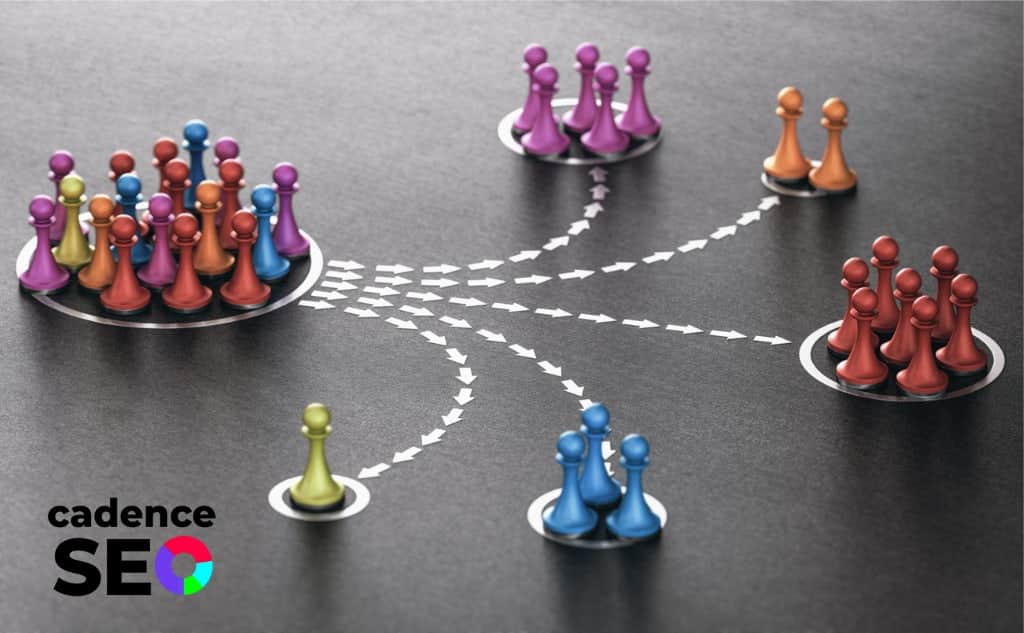Building a loyal customer base starts with connecting with the right audience. Organizations can choose from a wide range of effective marketing strategies to lure would-be customers to their doorsteps. However, a one-size-fits-all approach to digital marketing can end up missing the mark, leaving enterprises saddled with heavy expenses, poor customer conversion rates, and low ROI. While casting a wide net may sound like a great way to attract consumers, general messaging won’t necessarily turn them into customers. Why? Your products and services aren’t for everyone; it’s best to focus on those who would find your brand helpful. A message that tries to appeal to everyone can end up failing to resonate with anyone. After all, consumers who go online to shop are searching for a specific solution to their problems. For the right audience, you may be the perfect solution. That’s where audience segmentation comes in.
What is Audience Segmentation?
A group of consumers a business identifies as the most likely to become customers of their products or services is known as the target audience. This group shares many common traits, such as age, location, socioeconomic status, and more. With audience segmentation, businesses further dissect the target audience by dividing them into subgroups. Audience segmentation enables enterprises to deliver more relevant and personalized messaging. Segmenting your audience and creating specific buyer personas will not only help you create a personalized marketing strategy but will also enable you to reach the target market more effectively. A streamlined marketing approach geared toward a specific group of people has a much better chance of converting consumers into customers. When customers feel like a brand’s message is speaking right to them, it can build confidence, satisfaction, and loyalty—elements that will bring them back to your products or services for years to come.
Key Benefits of Audience Segmentation for SEO
By coupling search engine optimization (SEO) with audience segmentation, your business has the ability to reach the most relevant and largest target audience possible. While building buyer personas and identifying your subgroups may take extra effort, the results are well worth it!
The following are six key benefits of audience segmentation for SEO:
Increases Conversion Rate
Providing your ideal customers with relevant and targeted purchasing information goes a long way in setting the stage for securing sales. The fine-tuned messaging of audience segmentation can captivate your preferred customers, draw them to your website, and convert them from interested consumers into satisfied customers.
Boosts Your Email Campaigns
Sending personalized emails doesn’t mean adding your subscribers’ names at the beginning or in the subject line. It’s all about sending a message designed to solve a consumer’s specific problem with your product or service. Your segmented and tailored campaigns are much more likely to capture consumer interest than non-segmented campaigns.
Helps Create Loyal Customers
When you establish your ideal customer and build their buyer persona, you understand what type of target audience subgroup to focus on. Audience segmentation will make converting an engaged consumer into a loyal customer much more effective. With loyal customers, sales will increase.
Helps Attract New Customers
When you create a buyer persona for your preferred customer, you may discover subgroups you didn’t initially consider for your products or services. Your streamlined marketing campaign may generate more traffic to your website, increase conversion rates, and secure abundant revenue.
Provides Valuable Insight
Audience segmentation helps businesses create a clear picture of their customers’ behaviors, preferences, and needs. Marketing strategies can be adjusted to accommodate these discoveries, generating new growth opportunities.
Reduces Marketing Expenses
Marketing your products or services to consumers who have no need for them is a waste of valuable resources. The tailored approach of audience segmentation allows organizations to direct their energy toward the ideal customers.
What are the Different Types of Audience Segmentation?
To get a 360-view of your customers, you’ll need to utilize different audience segmentation types. The four most common include demographic, behavioral, psychographic, and geographic.
Demographic Segmentation
As a well-known traditional method of audience segmentation, deomograhic segmentation is typically the easiest to conduct. The standard demographics include:
Age
Gender
Education level
Marital status
Nationality
Geographic location
For example, if your high-potential segment consists of young people (15-22 years), you could create targeted campaigns around the beginning of the school year.
Behavioral Segmentation
This type of audience analysis looks at buyers’ shopping habits. Through behavior segmentation, organizations are essentially analyzing how users interact with your marketing as well as your products or services. Behavioral segmentation seeks to answer the following questions about consumer behavior:
What do they buy?
When do they buy it?
How did they find your enterprise’s website?
How often do they make purchases?
How do they engage with your emails/social media platforms?
When businesses understand what motivates a buyer to make a purchase, marketing strategies can adapt to support those interests.
Psychographic Segmentation
Psychographic segmentation is the closest you can come to reading your audiences’ minds, yet it’s also the most difficult to conduct. Basically, you’re attempting to identify patterns in your data that result in certain emotional responses. Psychographics analyze a potential customer’s values, interests, wants, goals, and personality. For instance, psychographics can help your enterprise understand the type of car dog owners like to drive, how they feel about the outdoors, or if they’re loyal to a particular brand.
Geographic Segmentation
While geography can overlap slightly with demographic segmentation, there are some complex areas that need to be examined more thoroughly. Geographic locations can be broken down in great detail. Going beyond the physical location, geographic segmentation can look at time zones, spoken languages, climate conditions, and much more. It can even break down subgroups by neighborhoods. For local SEO, geographic segmentation can be extremely useful. For instance, it can be nice to know which consumers are on the lookout for “best Thai food in Greenwich Village.”
Developing an Audience Segmentation Strategy
A well-defined audience segmentation strategy will make the segmentation process easier.
Naturally, you’ll have to revisit and change your audience segmentation in the future, but a strategy will serve as a roadmap.
Analyze Existing Data
By conducting an internal analysis, you will also get an insight into your audience’s main motivators, values, and attitudes. Also, analyzing revenues and transactions will make identifying the most profitable segments easier. So, explore your existing customers’ current information. Read their reviews and feedback. Look through transactions and revenue data. Observe social media and website analytics. By doing so, you’ll gain insight into how your audience interacts with your website and what they think of your products and services.
Establish Segmentation Criteria
Observe your audience and identify strong traits that are differentiable from the audience as a whole and could support a subgroup. You should also keep in mind that your segment should be substantial enough to be profitable. Also, make sure that the segments you choose have been stable enough over a longer period so that you can ensure that it’s worth investing in them.
Based on one of the four segmentation types mentioned earlier, subgroups will need to be targeted through different approaches and diverse messages.
Segment Audiences
You can divide your audience into groups based on the different types of audience segmentation. Here are some of the methods that you can use:
Rule-based segmentation: The criteria are chosen prior to the segmentation, and then the audience is divided into groups based on the pre-defined criteria.
Cluster-based segmentation: Observe similarities between visitors and then form groups based on them. Unlike rule-based segmentation, this method is based on authentic similarities rather than hypothetical ones.
Once you’ve segmented your audience, develop buyer personas for each segment to get a clearer insight. You’ll create a representation of each of your audience segments. Doing this gives you a more in-depth understanding of who your prospects are as you explore their pain points, hobbies, interests, and more.
Utilize Discoveries from Audience Segmentation
Be sure to include your audience segmentation discoveries in your digital marketing strategy.
Personalize Emails
Send personalized emails to your prospects based on where they are in the buyer’s journey.
Personalize Content on Your Website
Divide your website’s content based on your audience segments.
Adapt Your Social Media Platforms
Use different social media platforms to target different segments.
Personalize Advertising
Design your campaigns and adverts based on your different segments.
SEO Segmentation Made Easy with Cadence!
Audience segmentation will help you make sense of the abstract notion of “audience.” Your prospects and customers will no longer be a mysterious blend. Dividing your target audience into subgroups based on shared characteristics allows your organization to generate high-quality traffic, increase conversion rates, and propel revenue to new heights.
CadenceSEO is a full-service digital marketing firm that’s passionate about helping enterprises grow their online presence. Our expert SEO consultants can guide you through audience segmentation and help you establish a marketing strategy that’s right for your business. There’s a unique audience out there that’s looking for your products or services. Let us help you build an impactful connection with them. Schedule your free consultation with our team of SEO nerds today!






